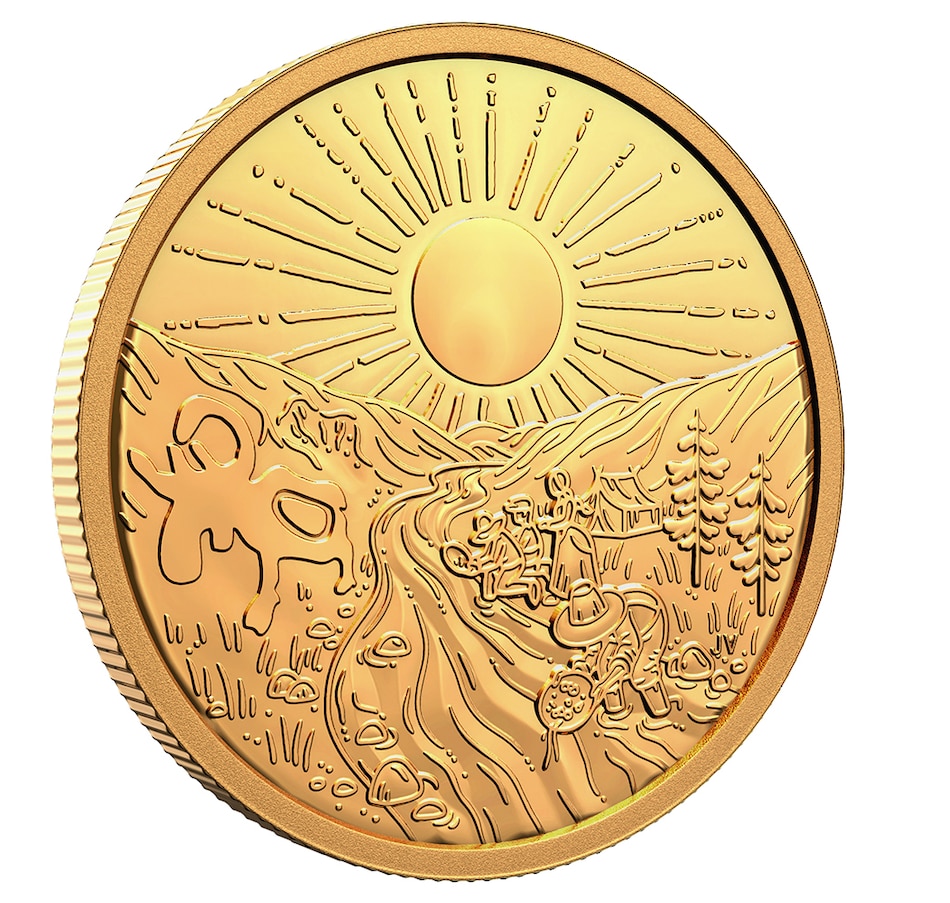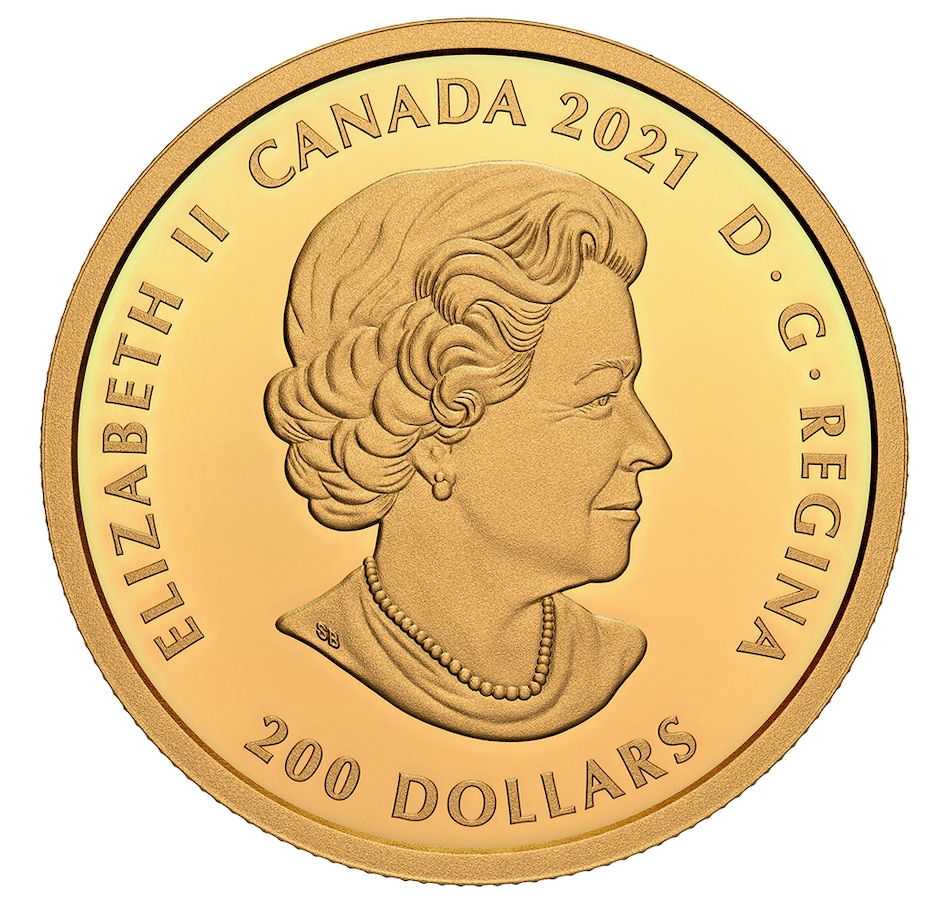2021 $200 Pure Gold Coin 125th Anniversary of the Klondike Gold Rush
703-717
$3,999.95
Free Shipping
or
12 Payments of $333.32
with
Product Overview
Re-live the thrill of discovering gold with this one-ounce $200 fine gold coin marking the 125th anniversary of the Klondike Gold Rush. Following the first discovery of gold on August 16, 1896, a stampede of close to 100,000 prospectors made the arduous trip to northwestern Canada's Yukon Territory. At the confluence of the Klondike and Yukon rivers, Dawson grew from a few hundred people in 1896 to about 30,000 by the summer of 1898. This gold rush coin combines the excitement of prospecting with the lasting impact the gold rush had on the Indigenous peoples of the area.
The design features an Indigenous artist's rendition of the gold discovery that set off the Klondike Gold Rush. Under the shining sun, the original four prospectors can be seen panning for gold at the edge of Rabbit Creek, a small tributary of the Klondike River. It was soon renamed Bonanza Creek, a name that became world-famous. The pictorial symbol for Moosehide Slide appears on the opposite side of the creek. For the Tr'ondëk Hwëch'in peoples, this natural land feature signified the arrival to their fishing grounds and a coming together of families following winter travels, while for gold seekers it signified their arrival into the Klondike. Today it signifies a connection to place for all residents of the region. The obverse features the effigy of Her Majesty Queen Elizabeth II by Susanna Blunt.
About the Klondike Gold Rush
Gold was discovered in mid-August 1896 by American prospector George Carmack, Keish (a.k.a. Skookum Jim Mason), Káa Goox (a.k.a. Dawson Charlie), and Shaaw Tlàa (Kate Carmack)—Tagish First Nation members into whose family Carmack had married. When word of the discovery reached the outside world in July 1897, it sparked an unprecedented influx of prospectors. Tens of thousands of would-be prospectors left their homes all over the world (though mainly from the United States) and headed for the Klondike.
• Mintage: 450
• Diameter: 30 mm
• Weight: 1 oz pure gold
• GST/HST exempt
Includes:
• 2021 $200 Klondike Gold Rush Pure Gold Coin
The design features an Indigenous artist's rendition of the gold discovery that set off the Klondike Gold Rush. Under the shining sun, the original four prospectors can be seen panning for gold at the edge of Rabbit Creek, a small tributary of the Klondike River. It was soon renamed Bonanza Creek, a name that became world-famous. The pictorial symbol for Moosehide Slide appears on the opposite side of the creek. For the Tr'ondëk Hwëch'in peoples, this natural land feature signified the arrival to their fishing grounds and a coming together of families following winter travels, while for gold seekers it signified their arrival into the Klondike. Today it signifies a connection to place for all residents of the region. The obverse features the effigy of Her Majesty Queen Elizabeth II by Susanna Blunt.
About the Klondike Gold Rush
Gold was discovered in mid-August 1896 by American prospector George Carmack, Keish (a.k.a. Skookum Jim Mason), Káa Goox (a.k.a. Dawson Charlie), and Shaaw Tlàa (Kate Carmack)—Tagish First Nation members into whose family Carmack had married. When word of the discovery reached the outside world in July 1897, it sparked an unprecedented influx of prospectors. Tens of thousands of would-be prospectors left their homes all over the world (though mainly from the United States) and headed for the Klondike.
• Mintage: 450
• Diameter: 30 mm
• Weight: 1 oz pure gold
• GST/HST exempt
Includes:
• 2021 $200 Klondike Gold Rush Pure Gold Coin
About the Brand
Learn More






